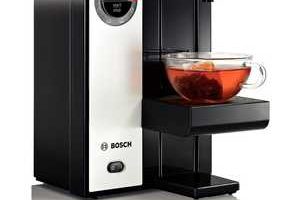Everyone is faced with a situation where after some time using any type of teapot, a plaque is observed inside it. Even using special filters for water purification, you cannot avoid the presence of stone-salt deposits on kitchen utensils.
Such a coating increases the time of heating the liquid in the kettle, which, due to the boiled precipitate, does not completely lose heat, overheats each time and soon breaks.
In addition, adhering salt particles are harmful to health, as they are deposited in the kidneys, stomach and liver, causing many diseases. It is important to take care of regular cleaning of the kettle, so as not to poison the body, to prevent permanent breakdown of an expensive device.
Such a coating is difficult to wash without additional funds, but using the following effective option, the problem will be solved easily, and most importantly, quickly. Clean the kettle limescale can be citric acid, it is an environmental product, the preparation of which is available to any housewife. This is one of the most popular types of cleaning. All store powders and liquids from stone deposits contain this acid, since although it removes scale, it does not spoil the dishes and does not adversely affect human health.
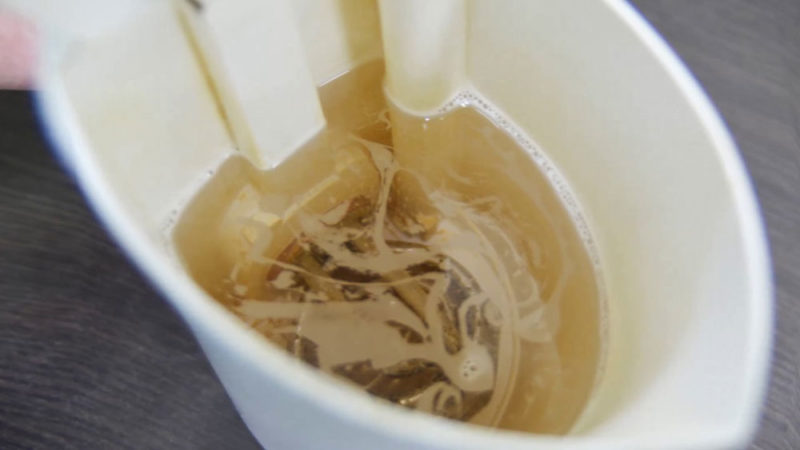
Available recipe - effective cleaning: how to clean the kettle from limescale with citric acid
Depending on the type of kettle (electric, enameled, glass) and on the amount of precipitation on it, various recipes for removing salt deposits are used.
Initial raid
Fill the dishes with water and add from 20 to 40 grams of lemon substance. Boil for three minutes over low heat, opening the appliance lid. After allowing the contents to cool (during this time, the product will eat away the plaque, and the dishes will clean well), and then drain the mixture with the plaque removed. In case of not getting rid of plaque the first time, repeat the procedure.
Steady plaque
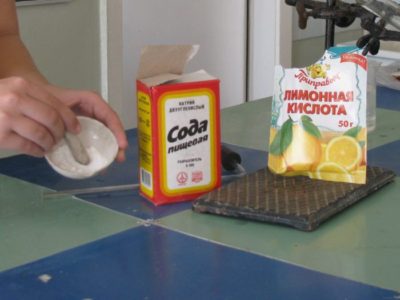
Triple Combination - The Radical Method
The first way: it is problematic to remove multi-layer plaque, so use a “nuclear” triple mixture. Dissolve two tablespoons of soda in a liter of water, boil the device with such a mixture for half an hour. Drain it and then fill the container with a liter of water with lemon powder (50 grams), wait at least three hours. Next, you need to drain the muddy water with precipitation and wash the dishes. After washing, clean the loosened layer of salt deposits with soda, and then boil the dishes with a solution of grape vinegar. Remove pasty plaque with a wooden spoon or spatula and rinse the kettle.
The second way: Pour water into a dish with a coating, dissolve a teaspoon of soda in it, boil and boil over low heat for 30 minutes. Drain, refill the kettle and add a tablespoon of acid, repeat the initial process. At the last stage, remove the remaining table vinegar (half a glass).
Metal and plastic appliance

An effective method for a metal kettle
There is another method for descaling in an electric kettle. Initially, fill 1/2 teapot with 100-150 ml of table vinegar with water, wait 15-20 minutes, pour one or two tablespoons of lemon substance into the mixture and boil. Let the mixture cool for 20 minutes and drain it, then wash the walls of the dishes with detergent.During the procedure, use gloves so as not to damage the skin on the hands.
If you are afraid to damage the dishes with vinegar, descaling in the kettle can be done in another way. Dissolve two teaspoons of citric acid in water and boil the solution until bubbles appear. Do not overexpose, as a heated mixture can spoil the appliance, and its vapor is dangerous for the lungs. Drain the contents of the kettle and remove any remaining stone deposits with a wooden spatula or sponge.

The result of applying this method
Ordinary glass teapot
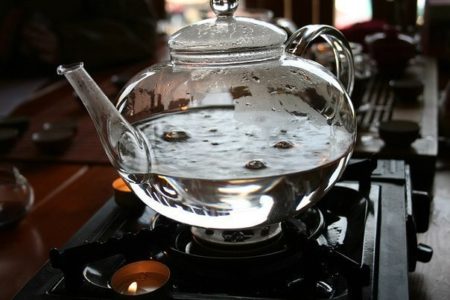
The most “demanding” kettle to care
Such dishes are problematic to clean, since its surface is vulnerable to the slightest mechanical damage. It will be correct to use the following gentle product: in the device, mix a tablespoon of lemon substance with the same amount of soda, add 90 ml of ordinary vinegar, pour everything with a liter of water and boil for 35–40 minutes. Then wait until the kettle cools down a bit and clean it with the soft side of the sponge.
The method without boiling
If you regularly clean the kettle, you can clean it of salt deposits without boiling for a long time: for this, fill the device with a mixture of a liter of water and 60 grams of citric acid and leave it for 5 hours, or better all night. After rinsing the kettle, fill it with water and bring to a boil to eliminate salt residues.
Advantages and disadvantages of these cleaning methods
Pros:
- Soft cleaning;
- The solution is easily washed away;
- Non-toxic, as citric acid is eaten;
- Budget, affordable option;
- Effectively copes with saline plaque, brings the dishes to the appearance in which it was when purchased;
- Removes even the oldest plaque.
Minuses:
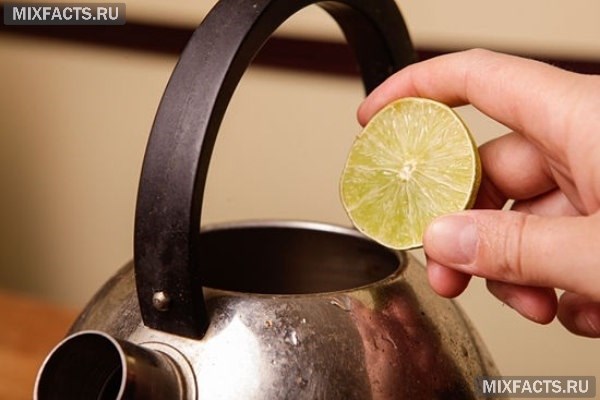
Lemon is an excellent analogue to powder
Some people have doubts about the effect of citric acid on a child’s health. There is an option that guarantees safety for young children - the manufacture of such an acid with their own hands. This method is more expensive, but safer. To do this, cut the lemon into thin rings (we don’t remove the skin), fill more than half of the appliance with water, add the chopped lemon and put it to boil. Pour cloudy water and rinse dishes. The amount of lemon depends on how dirty the kettle is. Another advantage of this method is a pleasant lemon smell for some time.
Having dealt with that, it is worth considering some recommendations correctly.
Firstly, the regularity of cleaning is proportional to the hardness of the water. If the water is soft, once is enough, if it is hard - two.
Secondly, to prevent the appearance of a thick layer of plaque, after each use of the device, rinse it with clean water, this will eliminate the difficulty of descaling, save time and energy. For a greater effect, carry out prophylaxis as the device becomes dirty, sometimes pouring it with a solution of acid for half an hour.

